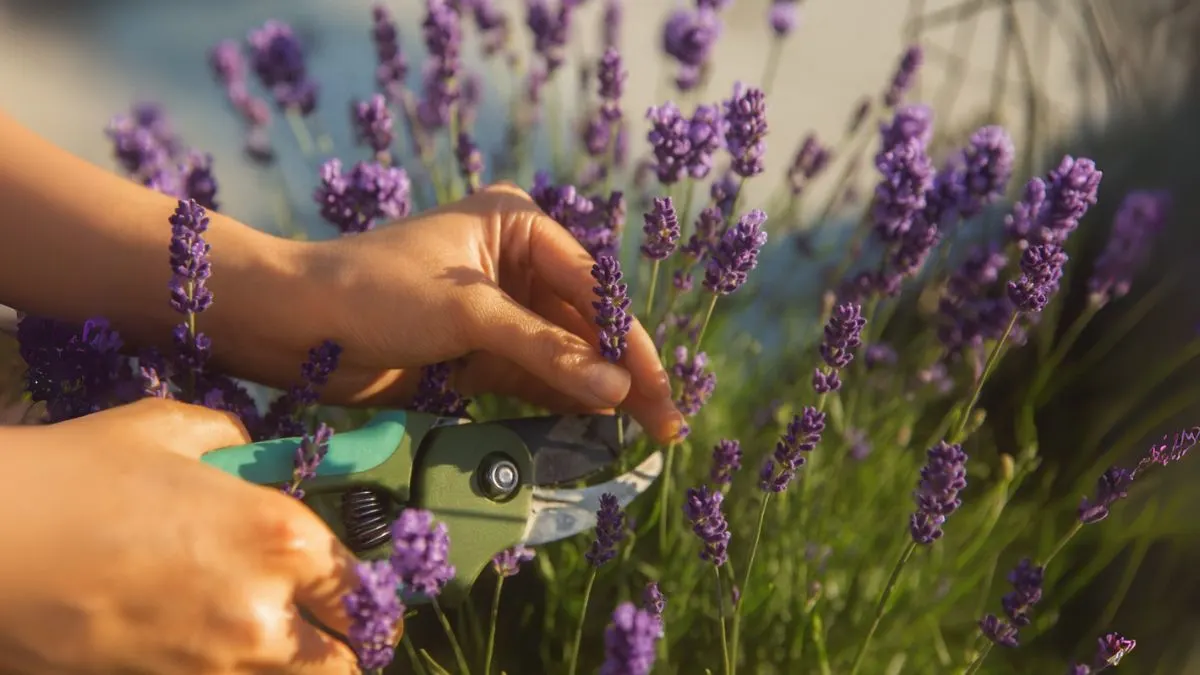Few plants capture hearts like lavender. Its calming fragrance, purple-blue blooms, and ability to attract pollinators make it a staple in gardens across the world. But there’s one secret every gardener must know—when and how to prune lavender. Done right, pruning ensures your lavender doesn’t turn into a woody, tired shrub. Instead, it rewards you with lush, long-lasting, fragrant blooms season after season.
When I first grew lavender in my backyard, I skipped pruning because I thought “the more leaves, the better.” By the second year, my plant was leggy, woody, and produced far fewer flowers. That’s when I learned that pruning is not just maintenance—it’s the heart of lavender care.
Why Pruning Lavender Matters

Pruning isn’t about cutting your plant back aggressively; it’s about giving it strength and direction. A properly pruned lavender:
- Encourages new shoots and denser foliage.
- Extends the lifespan of the plant.
- Produces more flowers with stronger fragrance.
- Keeps the shrub compact, preventing it from splitting open.
Lavender, whether English, French, or Spanish, responds beautifully to structured pruning—especially when done at the right time.
The Best Seasons to Prune Lavender
- Early Spring – A Fresh Start
In early spring, just as new growth appears, pruning helps lavender shake off winter damage. Trim back about one-third of the plant, avoiding the old, woody stems at the base. This timing encourages new shoots to grow vigorously through the warmer months.
Also Read: How to Grow Heliotropes—the Victorian-Era Flower That’s Making a Comeback
- After Summer Bloom – A Light Trim
Once lavender finishes its first big bloom in mid-to-late summer, you can give it a lighter trim. Remove spent flower stalks and shape the plant into a neat mound. This prevents the plant from getting too leggy and may even encourage a second flush of flowers.
🌿 Pro tip: Never cut into bare, woody stems that lack green growth—it’s hard for lavender to recover from that.
Step-by-Step: How to Prune Lavender
Step |
What to Do |
Why It Helps |
1 |
Use sharp pruning shears |
Clean cuts prevent disease |
2 |
Remove old flower stalks |
Encourages fresh blooms |
3 |
Trim one-third of green growth |
Keeps shape compact |
4 |
Avoid cutting woody stems |
Prevents dieback |
5 |
Shape into a dome |
Protects plant from snow/wind damage |
Types of Lavender and Their Pruning Needs
- English Lavender (Lavandula angustifolia): The most common variety worldwide, English lavender thrives when pruned twice—spring and after flowering. This keeps it compact and long-lived.
- French Lavender (Lavandula dentata): Since French lavender blooms multiple times a year, prune lightly after each flush of flowers. Regular shaping prevents the plant from sprawling.
- Spanish Lavender (Lavandula stoechas): Known for its butterfly-like bracts, Spanish lavender benefits from a gentle trim after flowering. Avoid heavy cuts as it’s more delicate than English types.
Common Mistakes to Avoid
- Pruning too late in fall – Cutting just before winter leaves the plant vulnerable to frost damage.
- Cutting into woody stems – Lavender rarely regenerates from old wood.
- Not pruning at all – Leads to leggy, woody shrubs with fewer blooms.
- Over-pruning – Cutting more than one-third of green growth can shock the plant.
Also Read: Bamboo Palms Care Mistakes You Didn’t Know You Were Making
Personal Experience: Lessons From My Lavender Bed
In my second year of growing lavender in Canada, I ignored pruning until the plant was half-woody. I thought it was too late, but with careful spring pruning, the plant revived. By shaping it into a rounded dome and cutting only green growth, I restored its fragrance and blooms. That experience convinced me that pruning is more of an art than a chore.
Extra Tips for Long-Lasting Lavender Blooms
- Plant lavender in well-draining soil and full sun (at least 6 hours daily).
- Use a balanced fertilizer only once a year; too much nitrogen reduces flowers.
- Harvest blooms in the morning when oils are strongest.
- Combine pruning with deadheading for a longer blooming season.
Pruning lavender may seem intimidating, but it’s the key to enjoying long-lasting, fragrant blooms year after year. The best time to prune is early spring for structure and after summer bloom for shaping. Remember to avoid woody stems, use sharp tools, and prune lightly but consistently.
Whether you’re in Canada, the USA, or anywhere in the world, lavender rewards thoughtful care with unmatched beauty and fragrance. So next time you admire those purple blossoms, know that the secret behind their charm lies in the hands of a mindful gardener.






